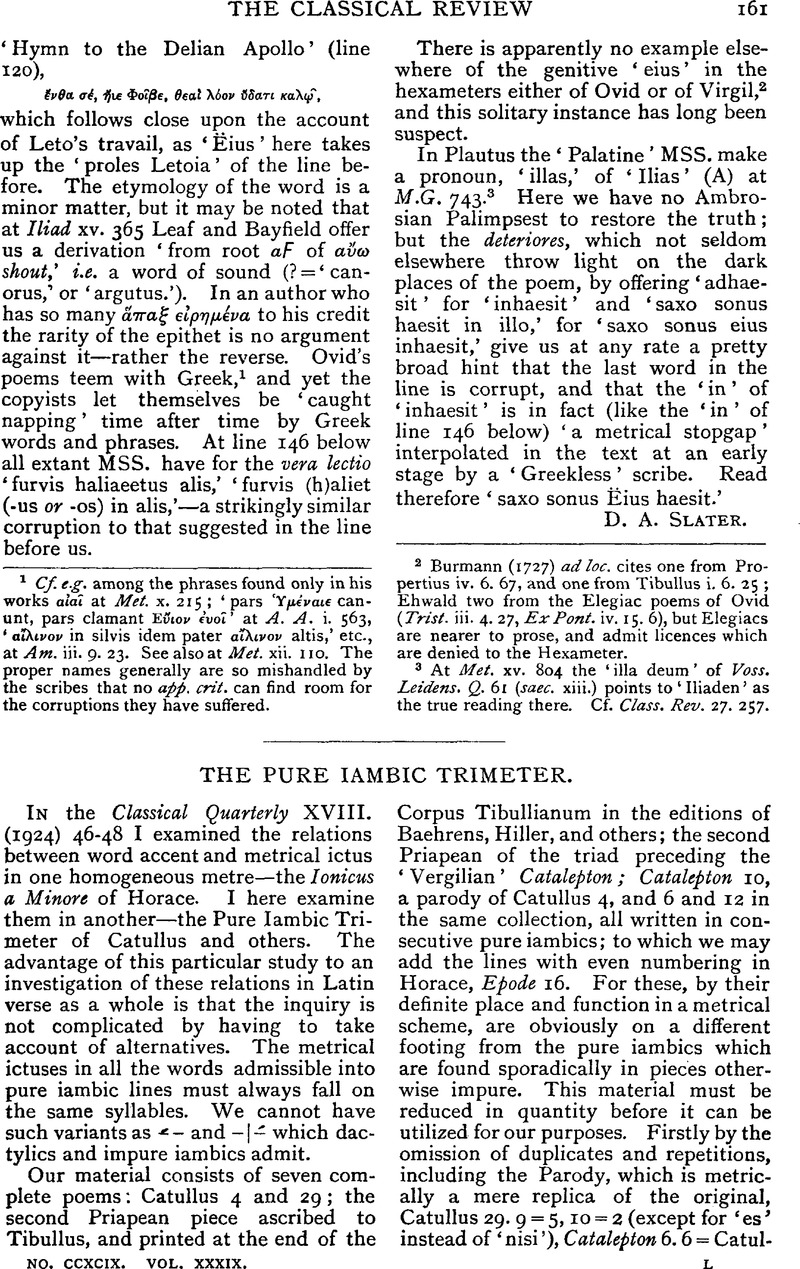No CrossRef data available.
Published online by Cambridge University Press: 27 October 2009

page 161 note 1 Priap. ii.* in Ellis's Appendix Vergiliana.
page 161 note 2 Admittedly, I say, disregarding Galletier, M., the last editor of the Appendix Vergiliana, 1920, who, apparently after Riese, 1906, and Sabbadini, 1918, believes the view that Priap. ii. is written in pure iambics to be an obsession of the editors: ‘note critique’ on v. 5 (p. 99, compare p. 100): ‘Tous les éditeurs, hantés par l'idée que cette pièce doit être en trimètres purs, écrivent tuor’ (for tueor). Presumably, then, it is written in B, the metre of Horace, Epod. xvii. This piece consists of 81 lines, 7 only of which are pure iambics, unless, with Vollmer, you read ‘sonare’ in v. 40. But Priap. ii., if we leave out of sight the corrupt v. 9, has, in M. Galletier's own text, 18 pure iambics out of 20 verses. We shall be glad to have from him some explanation of this astonishing difference, and further to know why in line 20 he follows Scaliger in changing the ‘ualenti … bracchio’ of the manuscripts, thus giving an ending -ě, which is rare enough in the ablative of the present participle when used as an adjective, unless it be to obtain a ‘pure iambic’ foot.Google Scholar
page 162 note 3 Other unmetrical readings—e.g. ‘amni’ for ‘amnis’ in Catullus 29. 19—are not regarded.
page 165 note 1 iv. 5, ‘opus foret’ is not counted in, as ‘foret’ may be enclitic. See above on ‘es,’ ‘sit.’